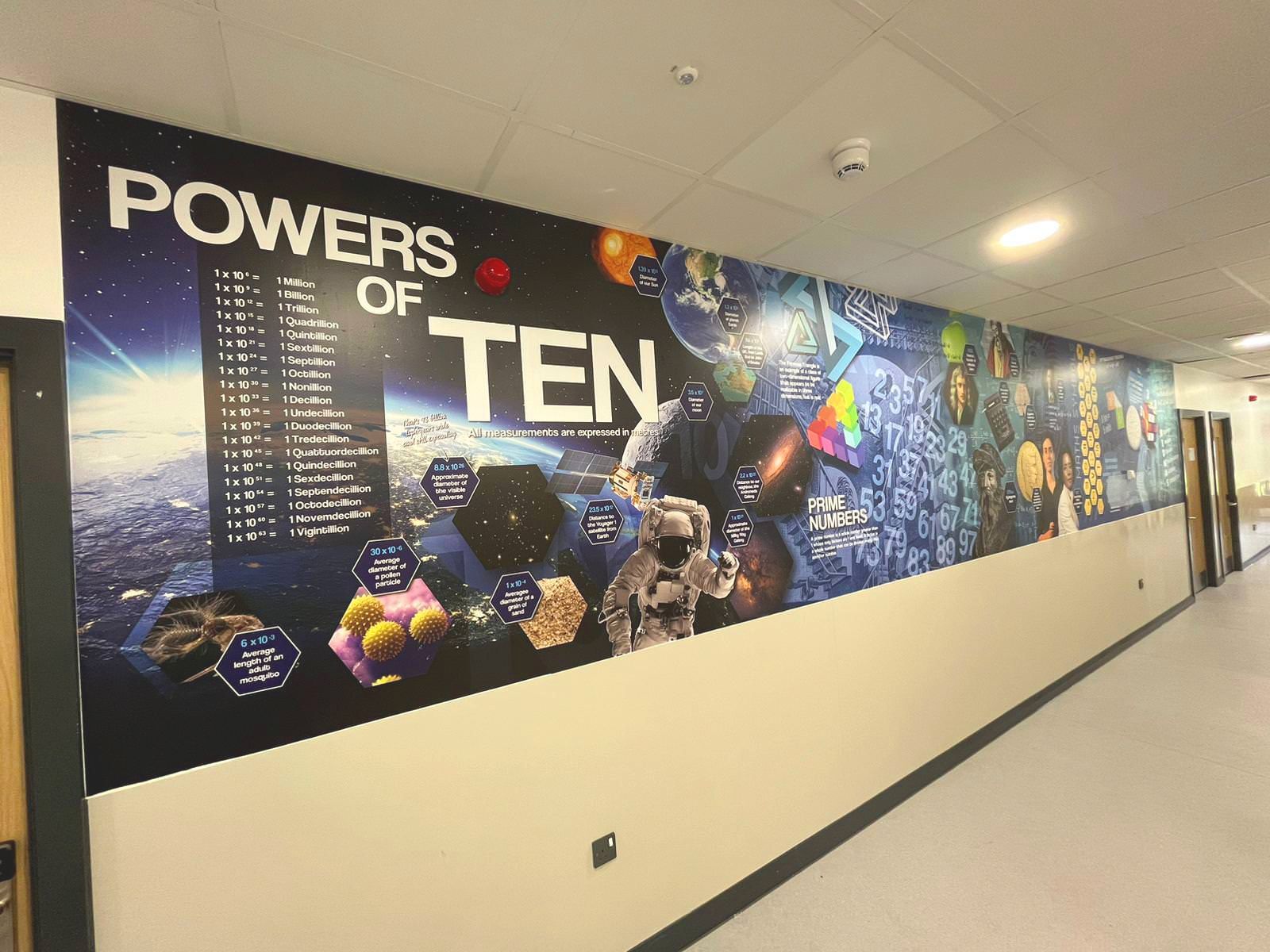Impact on pupils 33
In subjects like mathematics and science, wall graphics can visually illustrate abstract ideas such as shapes, numbers, the water cycle, or the life cycle of butterflies. Observing these concepts displayed on classroom walls regularly can strengthen understanding and assist students in grasping intricate concepts.

Enhancing Understanding through Wall Displays in Mathematics and Science;
Using wall graphics can significantly enhance students' understanding of concepts in math and science subjects as they can grasp intricate ideas through visual representations with consistent exposure every day. Here are some tips on creating and using wall graphics effectively to reinforce learning in math and science;
Creating depictions of intangible ideas;
- In math class, teachers use shapes and numbers to help students understand math better by providing aids, like equations and graphs, to illustrate mathematical concepts vividly.
- When teaching science concepts like the water cycle or chemical reactions, consider incorporating diagrams to explain these processes visually.
Break down procedures into straightforward diagrams:
- For example, illustrate the stages of the water cycle or depict the process of photosynthesis and a butterfly's life cycle step by step.
- Make sure to label all the parts of the diagram so that it helps with understanding.
- Areas for jotting down notes or sketches should be integrated into the design to give students space to write or draw freely, solve equations, or annotate diagrams effectively.
- Utilise components to visually represent alterations and functions dynamically, such as rotating segments of a cellular illustration.

Strategic Placement for Optimal Impact in Classrooms and Learning Areas:
1. Alphabet and Word Walls:
- Set up walls displaying the alphabet, words, and images (A for Apple, B for Ball). Update these regularly to introduce vocabulary.
2. Themed Vocabulary Walls:
- Create themed walls based on topics taught, like seasons, animals or family members, featuring labelled images and related words.
In Hallways and Corridors;
1. Seasonal and Rotating Displays:
- Use wall space to change displays that align with classroom themes or seasonal transitions. Include labelled images to introduce words continuously.
2. Word Games:
- Integrate word games like puzzles or word searches into the visuals to make learning engaging and enjoyable.
In Common Areas and Play Spaces;
1. Emotion and Action Words:
- Use graphics in play areas to illustrate emotions and actions alongside labels, aiding children in expressing themselves.
2. Community and Surroundings:
- To enhance learning, incorporate images and labels of community spots and natural elements such as parks, libraries and weather conditions.
Strategic Approach
1. Collaborative Design Process;
- Involving Teachers and Parents: Engage teachers and parents in the design phase to ensure that the visuals align with objectives and resonate with children's experiences.
- Professional Design Expertise: Collaborate with designers specialising in childhood education to create captivating and informative visuals.
2. Material Selection;
- Choosing Safe Materials: Opt for toxic, child-safe materials for interactive use by young children.
- Environmentally Conscious Choices: Select materials to instill awareness in children early on.
3. Professional Installation;
- Skilled Installation Services: Ensure expert installation to ensure safety and aesthetic appeal, preventing alignment issues or damage.
- Child Centric Placement: Position graphics at heights for children's visibility and accessibility for young learners.
4. Maintenance and Updates;
- Regular Care Routine: Establish a cleaning and maintenance schedule to maintain the graphics' appeal.
- Content Refreshes: Plan updates to introduce ideas, keeping the environment lively and engaging.
Examples of Wall Graphics Enhancing Language Development & Vocabulary Building
1. Word Display;
- Arrangement: A display showcasing the alphabet alongside images and corresponding words (like "A, for Apple " and "B for Ball"). It should include both uppercase and lowercase letters.
- Effect: Assists kids in connecting letters to sounds and words, which boosts their reading abilities.
2. Thematic Vocabulary Display;
- Arrangement: Displays focusing on themes, such as animals (lion, elephant, tiger), foods (apple, banana, carrot) or household items (table, chair, lamp).
- Effect: Strengthens acquisition by grouping words, aiding children in remembering related terms.
3. Interactive Word Matching Activity;
- Arrangement: A display featuring labels children can match with corresponding images (matching the word "dog" with a dog picture).
- Effect: Engages children in learning by reinforcing word recognition and vocabulary through hands-on participation.
4. Emotion and Action Display;
- Arrangement: Visuals illustrating emotions (happy, sad, excited) and actions (running, jumping, reading) accompanied by labels.
- Effect: Assists children in recognising and expressing their emotions and actions to enhance understanding and communication skills.
In conclusion:
Wall decorations can improve language and vocabulary skills among children by using labelled images, organising them thematically, and adding elements. These visual aids not only make the learning space more appealing but also offer valuable educational advantages. They enable kids to associate words with their definitions and enhance their early reading abilities. This method encourages a passion for education and discovery, establishing a basis for academic achievements.









